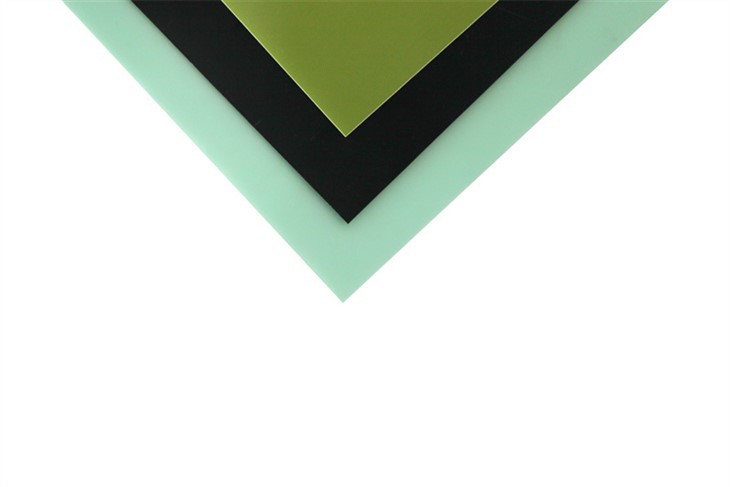Fiber orientation plays a crucial role in determining the mechanical properties of composite materials, especially the flexural strength of EPGC201 glass epoxy laminate. As a trusted supplier of EPGC201 glass epoxy laminate, I have witnessed firsthand the significant impact of fiber orientation on the performance of this material in various applications. In this blog post, I will delve into the relationship between fiber orientation and the flexural strength of EPGC201 glass epoxy laminate, exploring the underlying mechanisms and practical implications.
Understanding EPGC201 Glass Epoxy Laminate
EPGC201 glass epoxy laminate is a high-performance composite material composed of glass fibers embedded in an epoxy resin matrix. This combination of materials offers excellent mechanical properties, including high strength, stiffness, and chemical resistance. EPGC201 is widely used in electrical and electronic applications, such as insulation components, printed circuit boards, and switchgear due to its superior electrical insulation properties.
The Importance of Flexural Strength
Flexural strength is a critical mechanical property that measures a material's ability to resist deformation under a bending load. In many applications, EPGC201 glass epoxy laminate is subjected to bending forces, making flexural strength a key consideration for ensuring the structural integrity and performance of the component. For example, in electrical insulation applications, a laminate with high flexural strength can withstand the mechanical stresses associated with installation, operation, and environmental factors without cracking or failing.
How Fiber Orientation Affects Flexural Strength
The orientation of glass fibers in EPGC201 glass epoxy laminate has a profound influence on its flexural strength. When the fibers are aligned parallel to the direction of the bending load, they can effectively carry the load and resist deformation, resulting in higher flexural strength. Conversely, when the fibers are oriented perpendicular to the bending load, they are less effective in resisting the load, leading to lower flexural strength.
Unidirectional Fiber Orientation
In unidirectional fiber orientation, all the glass fibers are aligned in a single direction. This configuration provides the highest flexural strength in the direction parallel to the fiber orientation because the fibers can efficiently transfer the load along their length. However, the flexural strength in the perpendicular direction is significantly lower because the fibers are not well - aligned to resist the bending load.
Bidirectional Fiber Orientation
Bidirectional fiber orientation involves the arrangement of fibers in two perpendicular directions, typically in a woven fabric structure. This configuration offers a more balanced flexural strength in both the longitudinal and transverse directions compared to unidirectional orientation. The woven structure allows the fibers to share the load more evenly, resulting in improved overall mechanical performance.
Random Fiber Orientation
Random fiber orientation occurs when the glass fibers are dispersed randomly throughout the epoxy matrix. While this configuration provides some level of isotropic properties, the flexural strength is generally lower compared to unidirectional or bidirectional orientation. The random arrangement of fibers makes it more difficult for the material to efficiently transfer the bending load, leading to reduced mechanical performance.


Practical Implications for Applications
The understanding of how fiber orientation affects the flexural strength of EPGC201 glass epoxy laminate has significant practical implications for various applications.
Electrical Insulation Components
In electrical insulation components, such as busbar supports and coil formers, the flexural strength is crucial for maintaining the structural integrity of the insulation system. By selecting the appropriate fiber orientation, designers can ensure that the laminate can withstand the mechanical stresses during operation and installation. For example, in components where the bending load is primarily in one direction, a unidirectional fiber orientation may be preferred to maximize the flexural strength in that direction.
Printed Circuit Boards
Printed circuit boards (PCBs) are often subjected to bending forces during assembly, handling, and use. A PCB made from EPGC201 glass epoxy laminate with a suitable fiber orientation can resist these forces without cracking or delaminating. Bidirectional fiber orientation is commonly used in PCBs to provide balanced mechanical properties in both the X and Y directions, ensuring the reliability of the board.
Other Related Epoxy Laminate Sheets
In addition to EPGC201 glass epoxy laminate, there are other types of epoxy laminate sheets available in the market, each with its own unique properties and applications. For example, the 3240 Epoxy Laminate Sheet is known for its good mechanical and electrical properties, making it suitable for a wide range of electrical applications. The EPGC308 Epoxy Laminate Sheet offers high heat resistance and excellent mechanical strength, which is ideal for applications in high - temperature environments. The G10 Epoxy Laminate Sheet is widely used in the aerospace and electronics industries due to its high strength - to - weight ratio and good electrical insulation properties.
Conclusion
In conclusion, fiber orientation is a critical factor that significantly affects the flexural strength of EPGC201 glass epoxy laminate. By carefully controlling the fiber orientation, manufacturers can optimize the mechanical performance of the laminate to meet the specific requirements of different applications. As a supplier of EPGC201 glass epoxy laminate, I am committed to providing high - quality products with the right fiber orientation to ensure the best performance for our customers.
If you are interested in purchasing EPGC201 glass epoxy laminate or other related epoxy laminate sheets for your specific application, I encourage you to contact me for further discussion. We can work together to determine the most suitable fiber orientation and product specifications to meet your needs.
References
- Agarwal, B. D., & Broutman, L. J. (1980). Analysis and performance of fiber composites. John Wiley & Sons.
- Hull, D., & Clyne, T. W. (1996). An introduction to composite materials. Cambridge University Press.
- Mallick, P. K. (2007). Fiber - reinforced composites: materials, manufacturing, and design. CRC Press.
